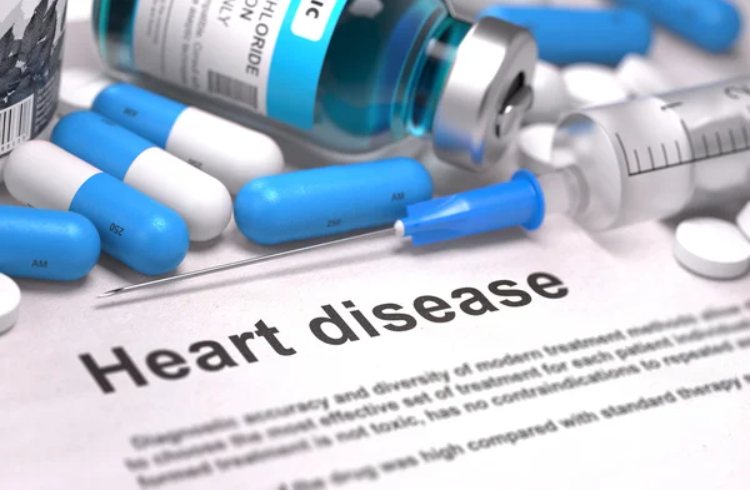Heart disease remains one of the leading causes of death, affecting an estimated 110 million men and 80 million women worldwide. Living with heart disease means facing symptoms like chest pain, shortness of breath, fatigue, and irregular heartbeats that can make everyday life incredibly difficult.
To manage symptoms of heart disease, patients have to combine medications with lifestyle changes. However, the high cost of prescriptions puts a heavy financial strain on many patients, forcing some to skip doses or take only half the recommended amount to save money. These dangerous practices put their health—and their lives—at serious risk.
Prescription Assistance Programs step in to remove the burden, allowing patients to take the full dose they need and helping them lead healthier lives and live longer.
Get prescription assistance program info and learn how they work to make life-saving heart medications more accessible for patients in need.

What are Prescription Assistance Programs?
Prescription Assistance Programs (PAPs) are initiatives that help patients access medications at reduced costs or even for free, depending on their eligibility. They are provided by pharmaceutical companies, non-profit organizations, or state-run initiatives that partner with healthcare providers to ensure no patient goes without necessary medication due to financial constraints.
Typically, PAPs are designed for individuals who don’t have adequate prescription coverage through their insurance or those who fall within specific income guidelines.
Each program has its own set of criteria, which usually includes proof of income, prescription details, and lack of sufficient insurance coverage. By meeting the requirements, patients can access high-cost medications that are crucial to managing their heart disease.
Common Heart Medications Supported by PAPs
Prescription Assistance Programs cover a range of medications, including some of the most prescribed drugs for heart disease:
- Statins: Used to lower cholesterol and prevent heart attacks, statins reduce the buildup of plaque in the arteries, lowering the risk of cardiovascular events.
- Beta Blockers: These medications help reduce blood pressure, control heart rhythm, and decrease the heart’s workload. They are prescribed to patients with hypertension or heart failure.
- Anticoagulants (Blood Thinners): Medications like warfarin and newer agents such as rivaroxaban prevent blood clots, significantly reducing the risk of stroke in patients with atrial fibrillation or those who have had heart valve surgery.
- ACE Inhibitors and ARBs: These drugs relax blood vessels, lower blood pressure, and are often prescribed to patients with high blood pressure or heart failure, helping to prevent further heart damage.

The Importance of Taking Heart Medications
Preventing Heart Attacks and Strokes
Medications like statins and anticoagulants are essential in preventing heart attacks and strokes. Statins work by lowering cholesterol levels, reducing the buildup of fatty deposits in the arteries. Anticoagulants prevent blood clots, significantly reducing the risk of stroke in patients with conditions like atrial fibrillation.
Managing Blood Pressure and Heart Rhythm
Beta-blockers, ACE inhibitors, and ARBs are often prescribed to help control high blood pressure and irregular heart rhythms, which can be dangerous if left unmanaged.
Beta-blockers work by slowing down the heart rate and reducing the force of each beat, which helps lower blood pressure and reduce heart strain. ACE inhibitors and ARBs relax blood vessels, making it easier for the heart to pump blood throughout the body.
By reducing the strain on the heart, medications prevent complications such as heart failure and help keep heart function stable.
Improving Quality of Life
Adherence to heart medications can alleviate symptoms such as chest pain, shortness of breath, and fatigue, allowing patients to feel better and stay active. This means being able to do simple things like walking or climbing stairs without constantly worrying about heart-related symptoms.
The relief these medications provide goes beyond physical comfort—they also help reduce anxiety about one’s condition, allowing patients to lead more fulfilling and independent lives.
Reducing Hospitalizations
Consistent use of prescribed heart medications lowers the risk of emergency room visits and hospital stays, which can be both financially and physically taxing. Staying on top of medication routines helps prevent sudden health crises, giving patients peace of mind and a greater sense of control over their condition.
Eligibility and Application Process for PAPs
Each Prescription Assistance Program has its own eligibility criteria, but most share a common set of requirements that patients must meet to qualify. Understanding these criteria can help you prepare for the application process and improve your chances of receiving assistance:
- Income Requirements: Most PAPs require proof of financial need, typically demonstrated through documentation such as tax returns, pay stubs, or bank statements. These documents help the program assess whether your income falls within their specified limits for assistance.
- Insurance Status: PAPs are primarily designed for individuals who are uninsured or underinsured—meaning those whose insurance does not adequately cover their medications. Patients may need to provide information about their insurance status to show that their current coverage is insufficient for managing their medication costs.
- Prescription Details: To confirm the need for assistance, patients must provide detailed information about their medications, including the drug name, dosage, frequency, and prescribing physician. This ensures that the program supports patients who genuinely need the prescribed treatment.
The application process usually involves gathering the necessary documents, completing application forms (often available on the PAP’s website), and submitting them directly to the program or through a healthcare provider’s office. Some programs may require additional steps, such as a physician’s signature or a completed medical history form.
To improve your chances of a successful application, be sure to double-check all forms for completeness and accuracy before submitting them. Missing information or errors can lead to delays or denials, so taking extra care during this step can make a significant difference.
Many PAPs also provide customer service support or online resources to help you navigate the application process, making it easier to get the help you need.

Get Our Prescription Assistance Program Info to Manage Your Medication Costs
By easing the financial strain, PAPs empower patients to follow their prescribed treatment plans consistently, helping them manage their heart disease without the added worry of overwhelming expenses.
If you or someone you care about is spending more than $50 per month on medications, Health Access Now is here to help. We work on your behalf to qualify you for substantial medication discounts through non-profit and government programs.
Contact us and explore our website to see if your prescriptions qualify for assistance in your state, and if they do, we’ll be there every step of the way to guide you through the process.


